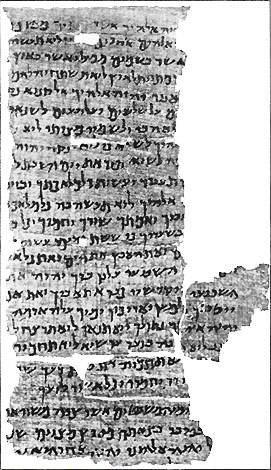
Pas de plus haute résolution disponible.
Ce fichier provient de un dépôt partagé et peut être utilisé par d'autres projets.
Sa description sur sa page de description est affichée ci-dessous.
Summary
The Nash Papyrus, a collection of four papyrus fragments acquired in Egypt by W. L. Nash and first described by Stanley A. Cook in 1903. The fragments were the oldest Hebrew fragments known at that time which contained a portion of the biblical Masoretic text, specifically the Ten Commandments and the Shema Yisrael prayer. The order the commandments listed in the Nash papyrus differs from that of the Hebrew Bible and Septuagint.
Though dated by Cook to the 2nd century, subsequent reappraisals have pushed the date back to the 2nd century BC. In addition to biblical text, it also exhibits a few unique readings. The papyrus was probably copied from a liturgical work.
Reference: David Noel Freedman, The Nine Commandments (Doubleday, 2000) p.87
Copyright status
This image is a slavish reproduction of a centuries-old original of a centuries-old subject. As such it is in the public domain.
Source
Original Source: http://www.jewishencyclopedia.com/images.jsp?artid=192&letter=D&imgid=716
Final Source:Wikimedia Commons
http://commons.wikimedia.org/wiki/Image:2nd_century_Hebrew_decalogue.jpg
Historique du fichier
Cliquer sur une date et heure pour voir le fichier tel qu'il était à ce moment-là.
| Date et heure | Vignette | Dimensions | Utilisateur | Commentaire |
|---|
| actuel | 17 novembre 2008 à 20:23 |  | 271 × 470 (41 kio) | Temlakos | The Nash Papyrus, a collection of four papyrus fragments acquired in Egypt by W. L. Nash and first described by Stanley A. Cook in 1903. The fragments were the oldest Hebrew fragments known at that time which contained a portion of the biblical [[ |
Utilisation du fichier
La page suivante utilise ce fichier :

